Toshogu, or literally Shrine of the Eastern Glimmer, is the mausoleum of Tokugawa Ieyasu, founder of the Tokugawa shogunate, which ruled Japan for over 250 years until 1868. The shrine was built to keep the spirits of Ieyasu alive.
At the grand entrance, there is a carved stone with the shrine's name and there is a huge stone torii not far beyond.
At the grand entrance, there is a carved stone with the shrine's name and there is a huge stone torii not far beyond.
Just to the left of the grand entrance is the five-storey pagoda which is 190 years old since its reconstruction in 1818. The predecessor of the pagoda was there since 1650. Since this is one of the landmarks at Toshogu, all the tourists were busy pressing their shutter-release buttons there.
By turning your head right from the view of the pagoda, You won't miss the Sanjinko (Three Sacred Storehouses) for the glimmering roof lining will certainly catch your attention. The amount of gold leaves used to decorate the buildings was considered monumental as simplicity was traditionally the key to the shrine architecture of Japan.
On the wall of the upper storey of one of the storehouses are figurines of elephant which were carved by a craftsman who had never seen the real thing. This is the main reason for the popularity of these figurines.
To the left of the main entrance to the Main Hall is Shinyosha (Sacred Stable) where a white horse is kept.
This stable is an important relic for the symbolic relief carvings of monkeys adorning the beams of the structure. The most famous panel of wooden carving is the 'hear no evil, see no evil, speak no evil' monkeys. All these panels depict the teaching and principles of Buddhism.
Just a few steps from the Sacred Stable is another torii leading the way to the Main Hall.
Flanking the entrance to the Main Hall are two drum towers on the side.
The perimeter wall separating the compound of the Main Hall is lavishly adorned with panels of wooden carving depicting plants and birds, mainly peacock. The amount of gold leaves used is really astonishing.
The main gate to the main hall is another monumental landmark of Toshogu, the Yomei-mon (Sunset Gate). It is dazzlingly decorated with carvings and paintings of all kinds, flowers, dancers, etc.
Even the inner side of the perimeter wall is not spared from being carved and painted.
Once inside the compound, Toshogu's Honden (Main Hall) is right in front. Its appearance is however dwarfed by the grandeur of Yomei-mon.
The corridor leading to the main hall is lined with wine jars offered by the followers of the shrine. As photography is not allowed inside the Main Hall, I am not able to show you the 100 dragons on the ceiling.
To the right of the Main Hall is the entrance to the hill leading to the tomb of Ieyasu, which required me to pay an additional fee.
This additional ticket permitted me to the viewing of Nemuri-Neko, a small wooden carving of a sleeping cat famous throughout Japan for its life-likeness. It is right above the gate leading to an uphill path to the tomb of Ieyasu on top of the hill.
The uphill path is lined with towering cedar trees, ending at the top of the hill with a shrine beside the tomb of Ieyasu.
This is where the spirits of Ieyasu are kept forever.



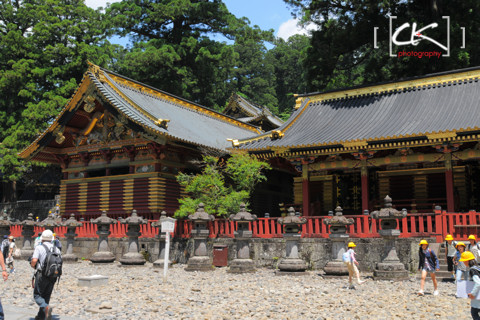
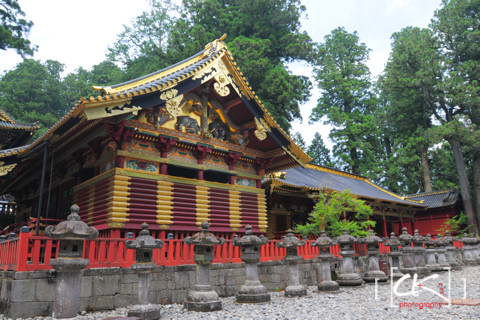
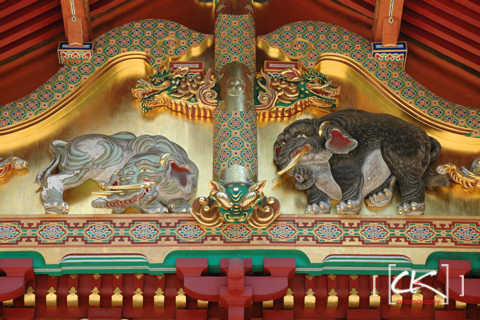
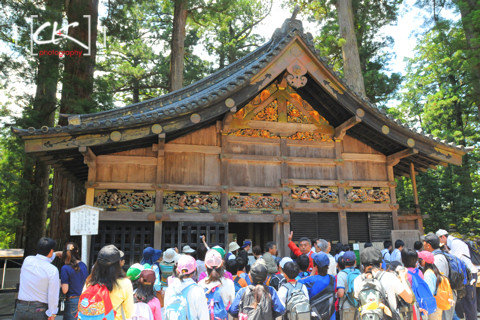
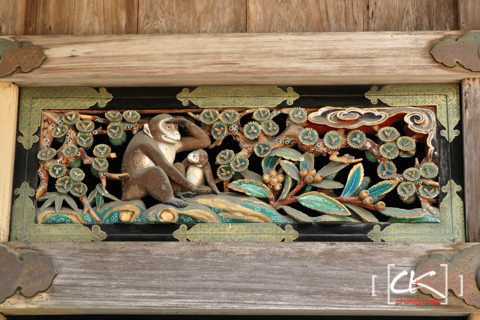
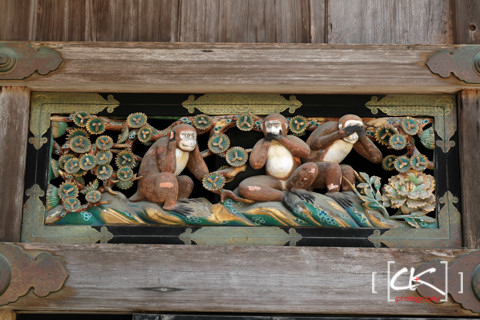
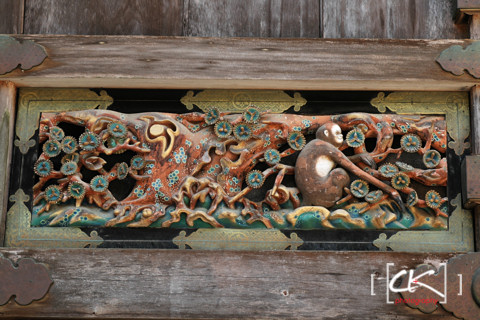
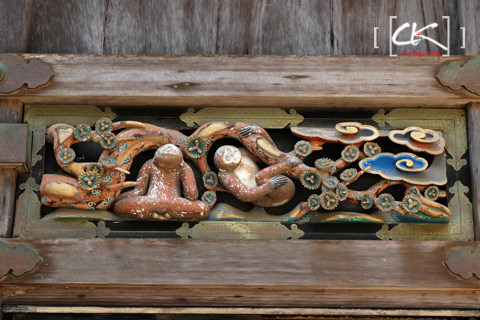
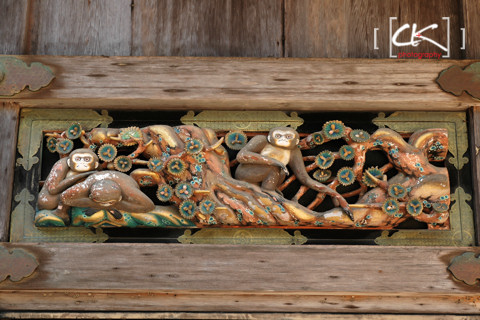

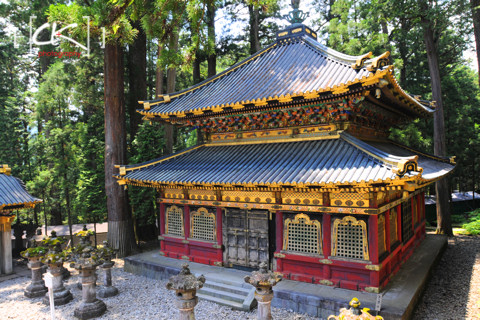
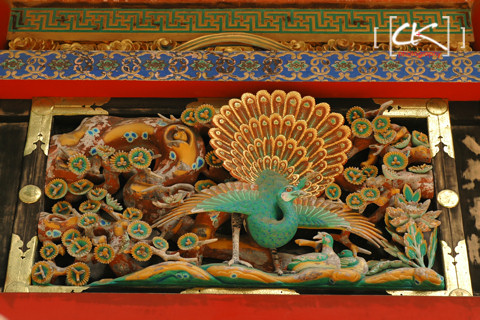
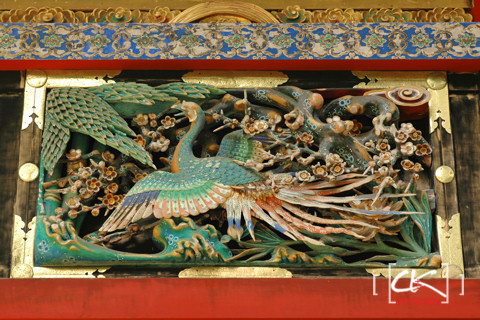



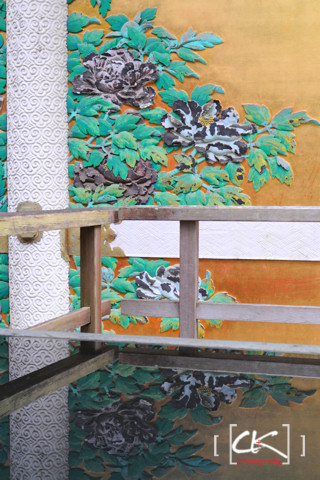

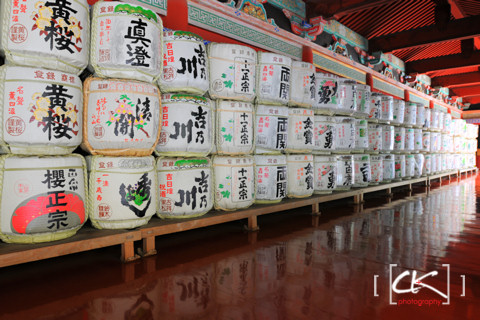
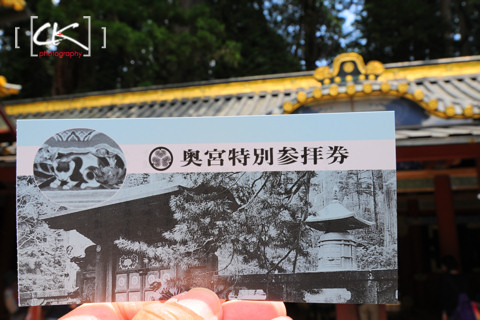
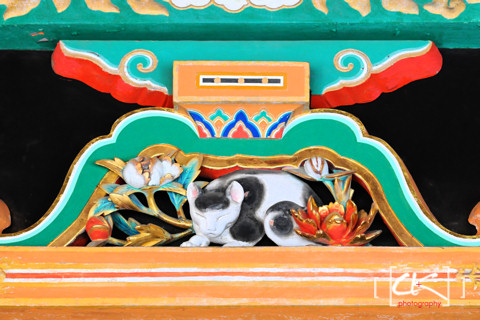
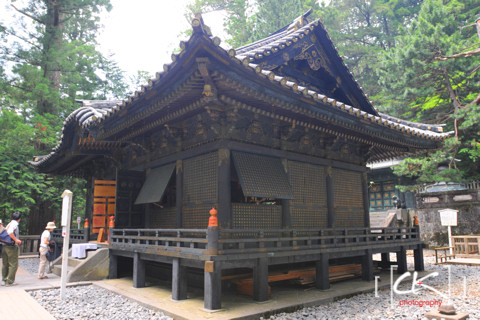












4 comments:
What an incredibly fascinating place. And the craftsmanship that went into all of those buildings and other structures. I can't begin to imagine what it would cost to build such a thing today...
Amazing photos as always, and an interesting story line to go with it!
Tokugawa as in the principal character from the book Shogun kah Sifu? Great story!
Mojo:> Yes, the amount of hard work and money put into building this shrine are really fascinating.
Ruey:> I am not very sure cos' I haven't read the book. However, the Tokugawa shogunate is the one carrying the three-leaf symbol.
Ruey:> I have read on Wikipedia and found out that James Clavell's Shogun novel describes the life of Toranaga who is analogous to Tokugawa Ieyasu. So you are right.
Post a Comment